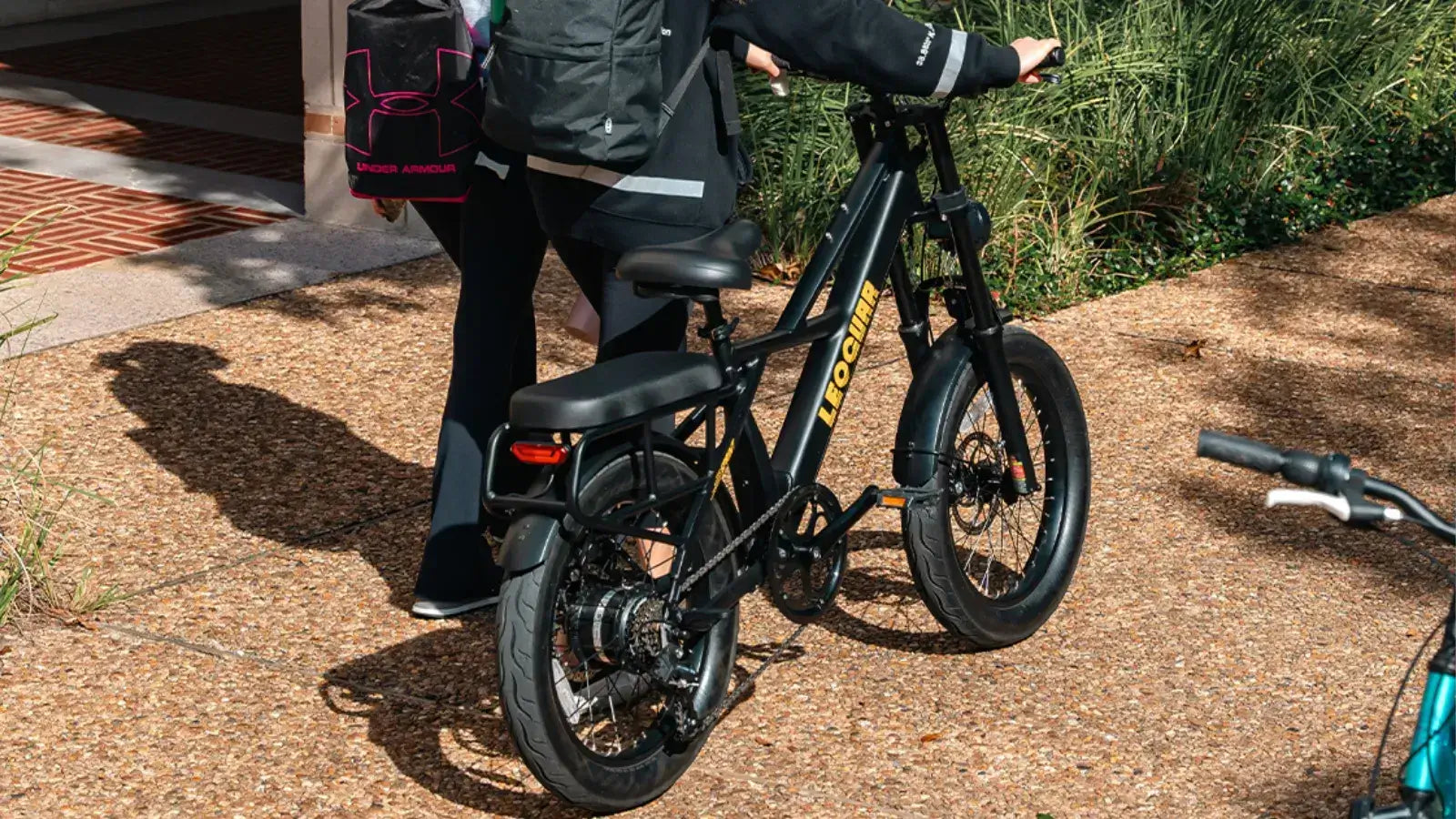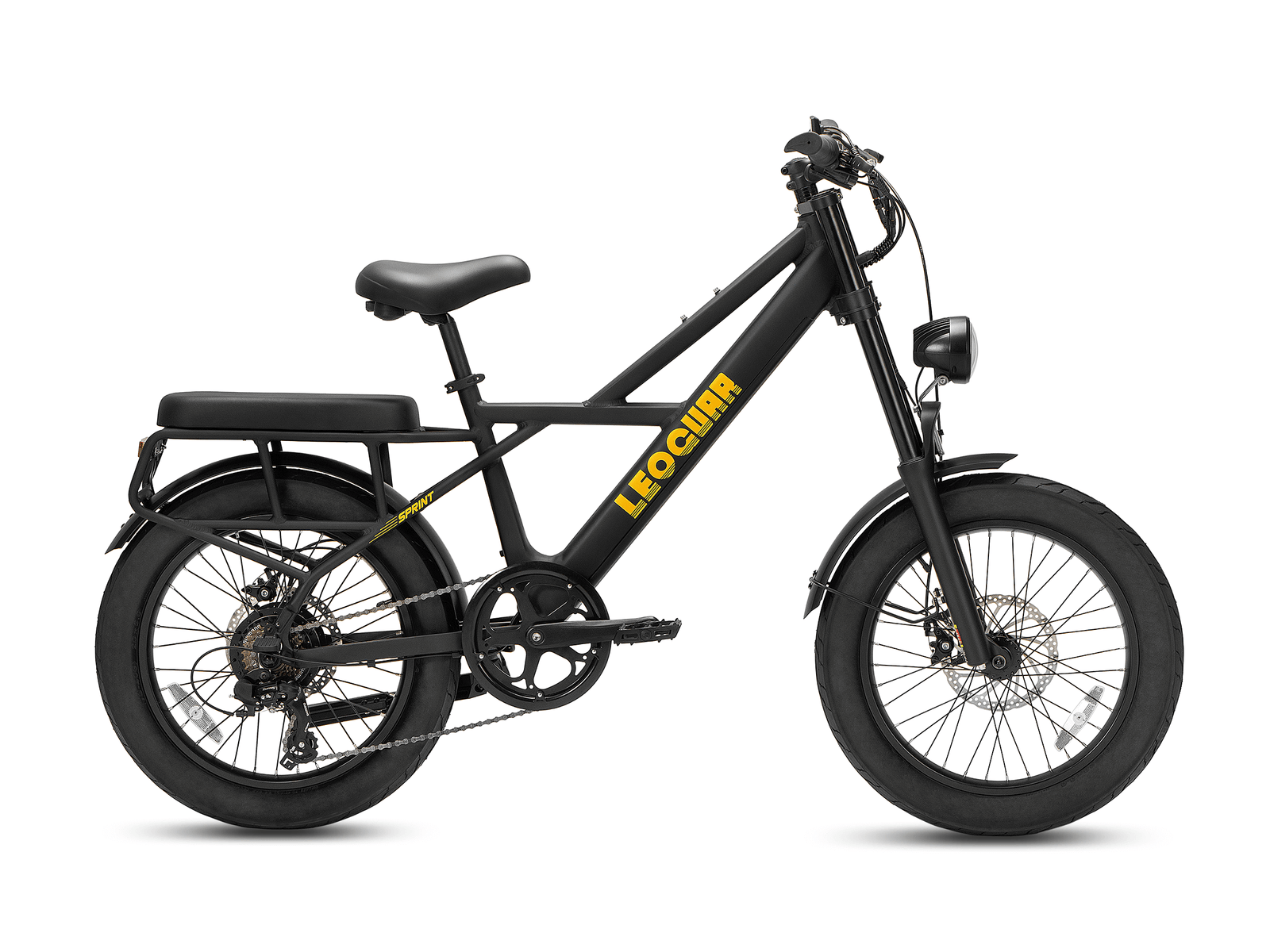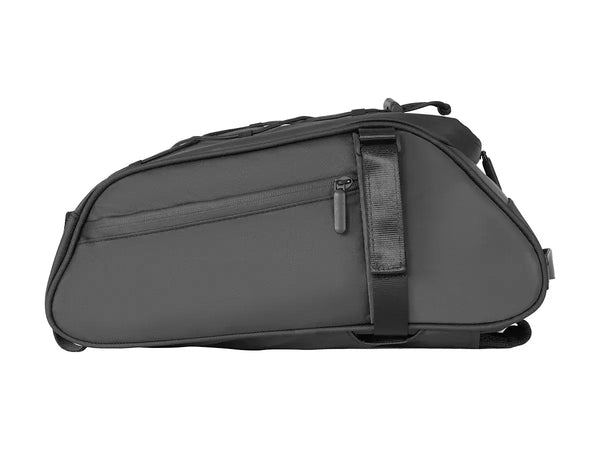
City Commuter Electric Bike Guide for Smart Urban Travel
The Urban Commuting Problem
The modern urban commute is broken. It's a daily struggle of stress, wasted time, and rising costs that affects millions of workers every day. For many, the dream of a quick, easy journey to work has been replaced by the frustrating reality of traffic jams and delays.
The Daily Grind
Your commute probably involves one or more of these familiar problems:
- Wasted hours sitting in traffic, moving very slowly.
- Public transit that is unpredictable, with delays and crowding that make every trip stressful.
- The high and ever-increasing cost of fuel, parking, and transit passes.
- The harm to the environment from cars with only one person in them.
- Arriving at your destination stressed before the day has even begun.
The E-Bike Solution
This is where the city commuter electric bike offers a life-changing solution. It's a purpose-built bicycle with an electric motor that helps you pedal more easily and efficiently. It's not a motorcycle; it's a smarter bicycle designed to make urban travel faster, easier, and more fun for daily riders. It allows you to climb hills without breaking a sweat, maintain a steady speed, and turn a frustrating commute into a refreshing ride that you might actually enjoy. For many, a city commuter electric bike is a much more cost-effective alternative to automobiles, offering a return to freedom and control over your daily journey.
A True City Commuter
Not all electric bikes are created equal. The term "city commuter electric bike" refers to a specific set of design choices and features made for the demands of the urban environment. It's more than a marketing label; it's a promise of usefulness, efficiency, and reliability for your daily ride that will serve you well. Understanding these features is the key to choosing a bike that will work for you for years.

Anatomy of an Urban Workhorse
A well-designed city commuter e-bike is an urban workhorse. Here are the key parts that define this category and why they matter for city riding.
-
Frame Geometry: City bikes focus on an upright riding position that feels natural and comfortable. This provides better visibility in traffic and reduces strain on your back and neck, ensuring a comfortable ride even during longer commutes. Many models also feature step-through frames, which make getting on and off the bike easy, a huge plus when making frequent stops in city traffic.
-
Motor Type: You'll typically find two main types: hub-drive and mid-drive motors that each have their benefits. Hub-drive motors, located in the center of a wheel, are often more affordable and excellent for flatter cityscapes. Mid-drive motors are positioned at the bike's pedals, providing a more natural and powerful feel, which is ideal for tackling hilly routes. Motor power for this category usually ranges from 250W to 750W, offering plenty of help for urban terrain.
-
Battery Range and Removability: Look for a realistic range of 20-50 miles on a single charge, which is more than enough for most daily commutes. A typical city commuter electric bike will have a battery capacity between 400Wh and 600Wh. A removable battery is a must-have for city dwellers who need flexibility in charging. It allows you to easily detach the battery and charge it indoors at your home or office, without having to bring the entire bike inside.
-
Integrated Accessories: True commuter bikes come ready to ride out of the box with everything you need. This means they include essential built-in accessories that save you money and time. Integrated front and rear lights powered by the main battery ensure you can see and be seen during your rides. Fenders are necessary for keeping you clean and dry from road spray in wet conditions. A sturdy rear rack is vital for carrying a laptop bag, groceries, or other cargo you need for daily life.
-
Tires and Suspension: Urban environments are filled with potholes, broken glass, and other hazards that can ruin your day. That's why durable, puncture-resistant tires are a critical feature for city riding. They provide peace of mind and reduce the chance of a flat tire ruining your commute. While some city e-bikes have front suspension forks to absorb bumps, many riders find that wider tires provide enough comfort without the added weight and maintenance of a suspension system.
Commuting Cost Analysis
The initial price of a city commuter electric bike can seem high, but it's only one part of the financial picture. When you analyze the Total Cost of Ownership, the e-bike quickly shows itself as an incredibly smart financial investment compared to other common commuting methods.
A 1-Year Cost Breakdown
Let's compare the estimated costs over a single year for three different commuters. This analysis shows how quickly the savings from an e-bike add up, often paying for the bike itself in a short period.
| Cost Category | City Commuter E-Bike | Personal Car | Public Transit Pass |
|---|---|---|---|
| Initial Purchase/Upfront Cost | $1,500 - $3,000 | $5,000+ (Used) | $0 |
| Annual Fuel/Energy Cost | ~$25 (Electricity) | ~$1,800 (Gas) | ~$1,200 |
| Annual Maintenance/Repairs | ~$150 | ~$900 | $0 |
| Annual Insurance | ~$120 (Optional) | ~$1,500 | $0 |
| Annual Parking/Tolls | $0 | ~$600+ | $0 |
| Estimated 1-Year Total | $1,795 - $3,295 | ~$9,800+ | ~$1,200 |
Assumptions: Car costs based on AAA averages for a sedan. Public transit based on a $100/month pass. E-bike electricity based on 500Wh battery, 15 mi/day commute, $0.15/kWh.
While a transit pass has a lower annual cost after the first year, the e-bike provides freedom, speed, and door-to-door convenience that public transport cannot match. Compared to a car, the savings are huge and add up quickly over time.
The Benefits Beyond Money
The benefits go far beyond your bank account and touch every aspect of your daily life. An e-bike commute offers predictable travel times, freeing you from the stress of unexpected traffic jams. It adds moderate physical activity into your daily routine, improving both physical and mental health. You arrive at your destination feeling refreshed and clear-headed instead of frustrated and tired.
A Step-by-Step Guide
Choosing the right city commuter electric bike can feel overwhelming with so many options available. By following a structured approach, you can narrow down the choices and find the perfect bike for your specific needs.
Step 1: Define Your Commute
First, analyze your daily route carefully. Ask yourself these key questions:
- How far is your round trip? This will determine the battery range you need for daily use.
- Are there significant hills? A mid-drive motor might be better than a hub motor for climbing.
- What will you need to carry? Ensure the bike has a rack with enough capacity for your daily items.
- Where will you store and charge the bike? This determines if you need a removable battery or a more compact frame.
Step 2: Understand Local Laws
E-bikes are often regulated by a 3-Class system, and it's vital to know the rules in your area. Though they are often considered a legally defined vehicle type, the specifics can vary significantly.
- Class 1: The motor provides help only when you are pedaling and stops helping at 20 mph.
- Class 2: Has a throttle that can power the bike without pedaling, up to 20 mph, and also has pedal-assist.
- Class 3: Is pedal-assist only and provides help up to 28 mph without a throttle option.
Laws vary significantly by city and state regarding where each class can be ridden. Knowing and understanding these rules is crucial for your safety and legal compliance.
Step 3: The Test Ride
You can read reviews and compare spec sheets all day, but nothing replaces a real-world test ride. Feeling how a bike handles, how the motor engages, and how comfortable the riding position is, is essential for making the right choice. Visit local bike shops and try a few different models to find what feels right for you.

Step 4: Focus on Safety Certification
This is a step you cannot skip. Ensure the bike's electrical system is certified by a recognized third-party testing lab, such as UL. Look for UL 2849 for the entire e-bike system or UL 2271 for the battery pack specifically. This certification ensures the system has been rigorously tested to prevent fire hazards, a critical safety measure for any electric device. As concerns over battery fires have grown, major cities are beginning to require this, with New York City requiring that every electric bike sold... be certified to the UL 2849 standard.
A Realistic E-Bike Commute
What does using a city commuter electric bike actually feel like day-to-day? It's about small, life-changing moments that add up to a completely different journey.
The Morning Rush, Reimagined
Your morning starts not with the stress of car horns, but with a quick pre-ride check: tire pressure is good, battery is fully charged. You roll out and the first pedal stroke engages the motor with a smooth, satisfying push that makes you smile. At the first traffic light, you pull away from the line easily, getting ahead of traffic. That hill that used to be a tough, sweaty climb is now a gentle slope you go up with ease, keeping a comfortable pace. You arrive at the office energized and clear-headed, not exhausted and in need of a shower.
Navigating the Urban Jungle
Weaving through the city becomes a smooth experience. The nimbleness of your city e-bike allows you to use bike lanes and navigate tight spaces that cars can't fit through. The upright riding position gives you a commanding view of your surroundings, increasing your awareness and confidence. You are no longer a passive passenger stuck in a metal box; you are actively and efficiently moving through your city.
The Day's End
At the end of the workday, securing your bike is straightforward. A high-quality lock through the frame and rear wheel to a solid rack provides peace of mind. The ride home is your reward and a chance to unwind from the day. It's a chance to decompress, to feel the breeze, and to disconnect from the stresses of work. You might even take a scenic detour through a park—a small joy you'd never experience in a car.
Urban Rider Safety
Owning a city commuter electric bike is an investment in your freedom and well-being. Protecting that investment and yourself requires a commitment to basic maintenance and safe riding practices.
Pre-Ride Safety Checklist
Before every ride, take 30 seconds to perform a simple safety check. A great way to remember it is with the "ABC-Q" method:
- A is for Air: Squeeze the tires to ensure they are properly inflated.
- B is for Brakes: Squeeze both brake levers to make sure they feel firm and stop the wheels effectively when you push the bike forward.
- C is for Chain: Look at your chain to make sure it's clean and lightly lubricated, not dry and rusty or caked with grime.
- Q is for Quick Releases: If your wheels have quick-release levers, ensure they are securely closed and tight.
Basic Home Maintenance
You don't need to be a professional mechanic to keep your e-bike in great shape. Simple tasks like keeping the bike clean, taking care of the chain, and checking your brake pads for wear can be done at home. For any complex issues, especially those involving the motor, battery, or electrical system, it's always best to consult a professional bike shop with e-bike experience.
Essential Commuting Gear
The right gear is just as important as the bike itself. These items are necessary for any urban rider:
- A high-quality, certified helmet that fits properly.
- A strong lock, such as a thick U-lock or a heavy-duty chain, to prevent theft.
- Bright, visible clothing or reflective accessories, especially for riding in low-light conditions.
Depending on local laws, some safety equipment like helmets or lights may be required, so always check your local regulations.
Frequently Asked Questions
Q: How long does it take to charge a city commuter electric bike battery?
A: Most e-bike batteries take 3-6 hours to fully charge from empty. Many riders charge their battery overnight or during the workday, so the bike is always ready for the next ride.
Q: Can I ride my e-bike in the rain?
A: Yes, most city commuter electric bikes are designed to handle light rain and wet conditions. However, you should avoid riding through deep puddles or heavy downpours to protect the electrical components.
Q: Do I need a license or registration for my e-bike?
A: In most areas, Class 1 and Class 2 e-bikes don't require a license or registration. Class 3 e-bikes may have different requirements depending on your location, so check your local laws.
Q: How much maintenance does an e-bike need compared to a regular bike?
A: E-bikes need similar maintenance to regular bikes for the mechanical parts, plus occasional battery care. The electrical components are generally very reliable and require minimal maintenance.
Q: What happens if my e-bike battery dies during my commute?
A: You can still pedal the bike like a regular bicycle, though it will be heavier. Most city commuter electric bikes are designed to be rideable even without motor assistance, so you won't be stranded.











































Leave a comment